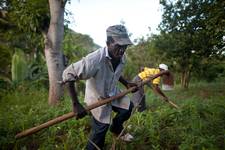In Japan, farmers' pluractivity plays a role in keeping them active
In general, it is considered that the pluractivity of farmers plays a contrasting role in whether or not farms are maintained. Published in the Journal of Agricultural Economics, recent work conducted at the Japanese prefectural level by a Japanese-American team, shows that its impact depends on the share of non-agricultural income and the type of employment on and off exploitation.
Family farms and other types of farming organizations
Family farms are a type of agricultural organization where domestic and agricultural activities are interdependent, which mobilize only family workers and do not employ permanent, waged labour. Family wealth and productive capital are intertwined, as are the farm and family budgets. We consider family business farms (family farms which employ at least one permanent worker or a high proportion of casual, seasonal labour) to fall under the umbrella of family farming, as the lands involved and means of production remain under family control.
Corporate farms differ, in that the family tie no longer exists and all of the labour on these farms is salaried.

In this way, a comparison can be made between family farming and other forms of production, such as industrial-enterprise farming, where the totality of work is based on waged labour and where there are no links between those who hold the assets and those who work the land.
However, the term Family Farming is not an abstract unit for observation and generating statistics. Focus on economic issues strictly related to agricultural production or the physical size of the farm to define family farming imposes limits on understanding and assessing the importance of the family unit evolving over time with multiple activities, strategies and resources. Other definitions have focused on only one of the assets, most often the land, or on one agricultural output: the gross or net economic product. The use of narrow sets of agricultural data can also be misleading, as they typically do not take into account the diversified set of activities out of which the families develop their livelihood strategies.
WAW propose to use the WAW core set of variables and indicators to document the place and the state of family farming based on existing data sets (mainly Censuses, Living Standards Measurement Study - Integrated Surveys on Agriculture (LSMS-ISA) or other Agricultural and Household Surveys when available) and given the limits of each data set.
When available, the initiative would also map the entrepreneurial and corporate sector in order to be able to situate the relative contribution of these forms of farming and describe the continuum from smallest-scale family farms to the emergence of small- and medium-scale enterprises, cooperatives and other organizational models across value chains, rooted in both rural and urban contexts.

